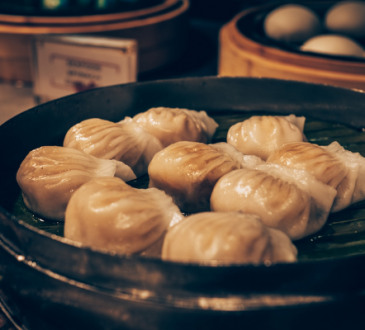Exploring the Vibrant World of Chinese food with spices
Chinese cuisine is renowned worldwide for its rich flavors, diverse ingredients, and meticulous preparation techniques. While many may associate Chinese food with familiar dishes like sweet and sour chicken or fried rice, the depth and breadth of Chinese culinary tradition extend far beyond these popular offerings. One of the most fascinating aspects of Chinese cuisine is the use of spices, which play a crucial role in enhancing both the taste and aroma of dishes. In this exploration, we delve into the world of Chinese food enriched with spices, uncovering the secrets behind its tantalizing allure.
Contents
The Essence of Spice in Chinese Cooking:

Spices are integral to Chinese cooking, not merely for adding heat but also for imparting complex layers of flavor. Unlike some Western cuisines where spices are often used in bold and assertive ways, Chinese cuisine utilizes spices with subtlety and finesse, aiming to achieve a harmonious balance of flavors. The art of seasoning in Chinese cooking involves a delicate interplay of various spices, each contributing its unique essence to the dish.
Among the most commonly used spices in Chinese cuisine are ginger, garlic, star anise, Sichuan peppercorn, cinnamon, cloves, and fennel seeds. These spices are employed in different combinations and proportions to create a diverse array of flavors, ranging from the numbing heat of Sichuan cuisine to the fragrant subtlety of Cantonese dishes.
Regional Diversity in Spice Usage:
One of the remarkable features of Chinese cuisine is its regional diversity, with each region boasting its distinct culinary traditions and flavor profiles. This diversity is reflected in the use of spices, with different regions favoring particular spices based on local preferences and availability.
In Sichuan cuisine, known for its bold and fiery flavors, the use of Sichuan peppercorn is ubiquitous. These tiny, reddish-brown peppercorns possess a unique numbing sensation that sets Sichuan dishes apart. Combined with dried chilies, garlic, and ginger, Sichuan peppercorns create a potent flavor profile that tingles the taste buds and leaves a lasting impression.
In contrast, Cantonese cuisine, characterized by its emphasis on freshness and lightness, utilizes spices more sparingly. Ginger and garlic are staples in Cantonese cooking, used to add subtle warmth and depth to dishes without overpowering the delicate flavors of seafood and vegetables. Cantonese chefs often employ techniques like stir-frying and steaming to preserve the natural essence of ingredients, allowing spices to complement rather than dominate the overall taste.
Spice as Medicine:
In traditional Chinese medicine (TCM), spices are not only valued for their culinary properties but also for their medicinal benefits. Many of the spices commonly used in Chinese cooking are believed to have therapeutic properties and are incorporated into TCM remedies to promote health and well-being.
For example, ginger, renowned for its warming properties, is often used to alleviate digestive discomfort and cold symptoms. Garlic is prized for its antibacterial and immune-boosting properties, while star anise is used to aid digestion and relieve coughs. By incorporating these spices into everyday cooking, Chinese cuisine not only delights the palate but also nourishes the body, reflecting the holistic approach to health that is central to TCM philosophy.
The Evolution of Spice Trade in China:

The use of spices in Chinese cuisine has been shaped by centuries of trade and cultural exchange. Historically, China served as a vital hub on the ancient Spice Route, facilitating the exchange of spices, silk, and other commodities between East and West. This exchange not only enriched Chinese cuisine but also influenced culinary traditions across Asia and beyond.
During the Tang Dynasty (618-907 AD), the Silk Road flourished, bringing exotic spices like cinnamon, cloves, and nutmeg to China from distant lands. These spices found their way into Chinese kitchens, where they were incorporated into both savory and sweet dishes, adding new dimensions of flavor and aroma.
In later centuries, the establishment of maritime trade routes further expanded China’s access to spices from regions like Southeast Asia and the Indian subcontinent. This influx of spices contributed to the development of regional cuisines, as different regions adapted and incorporated new ingredients into their culinary repertoires.
Modern Innovations in Spice-infused Chinese Cuisine:

In recent years, Chinese chefs both in China and abroad have been experimenting with innovative ways to incorporate spices into traditional dishes, as well as creating entirely new flavor combinations. This culinary renaissance has been fueled by a growing appreciation for Chinese cuisine worldwide, as well as a desire to push the boundaries of culinary creativity.
One example of modern spice-infused Chinese cuisine is the revival of traditional spice blends like five-spice powder. This aromatic blend of star anise, cloves, cinnamon, Sichuan peppercorn, and fennel seeds is a staple in Chinese cooking, used to season everything from meats to sauces. However, contemporary chefs are putting their own spin on this classic spice blend, using it to add depth and complexity to dishes in unexpected ways.
Another trend in modern Chinese cuisine is the fusion of Chinese and Western flavors, resulting in innovative dishes that marry traditional Chinese techniques with global ingredients and spices. This fusion cuisine reflects the evolving tastes of a globalized world, where culinary boundaries are increasingly blurred, and creativity knows no limits.
Conclusion:
Chinese cuisine is a treasure trove of flavors, with spices playing a central role in its culinary tapestry. From the fiery heat of Sichuan peppercorns to the fragrant warmth of ginger and garlic, spices add depth, complexity, and nuance to Chinese dishes, elevating them to new heights of gastronomic delight. As Chinese cuisine continues to evolve and adapt to changing tastes and trends, one thing remains constant: the enduring allure of spice-infused flavors that tantalize the senses and captivate the palate.



